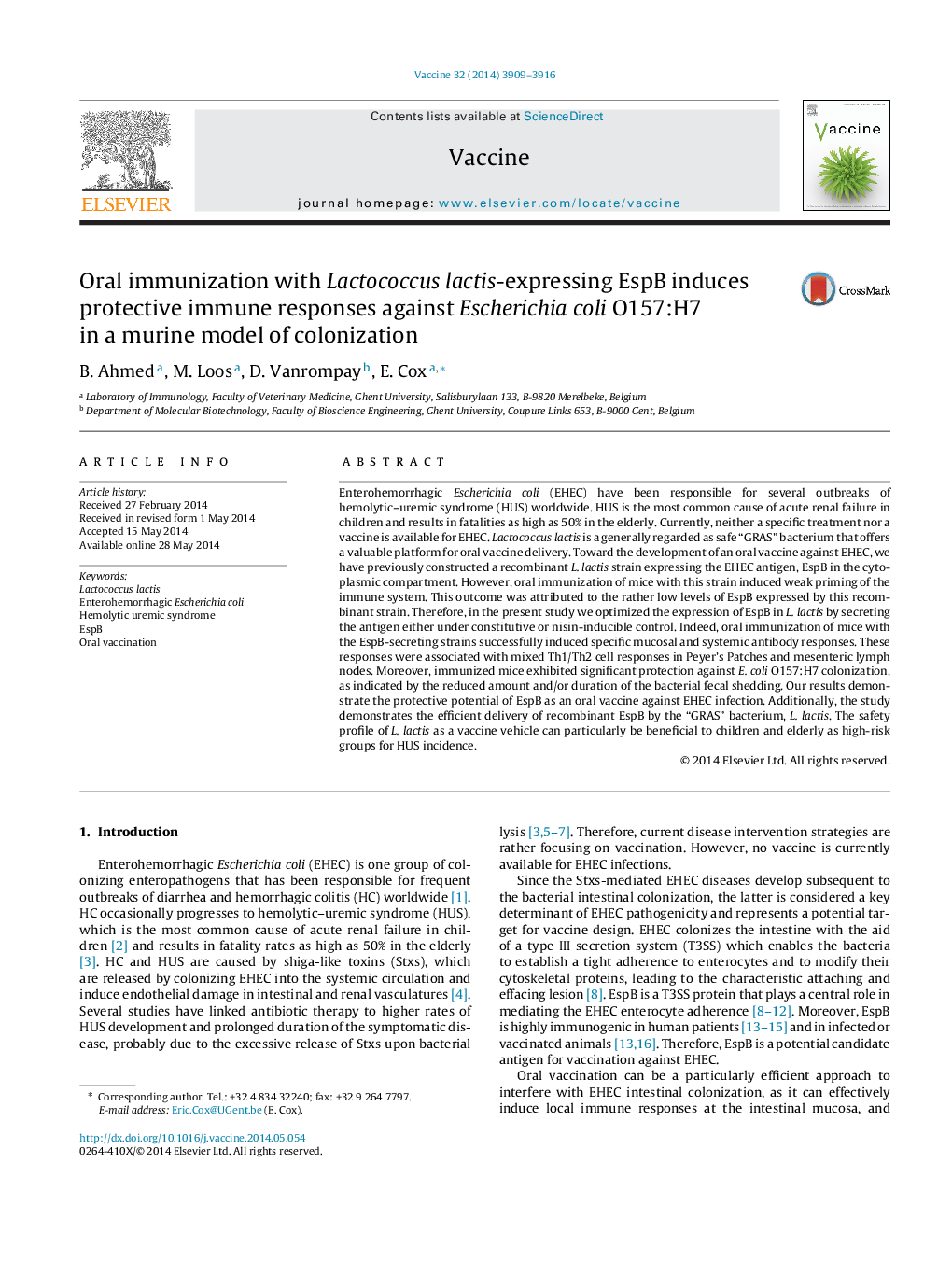| Article ID | Journal | Published Year | Pages | File Type |
|---|---|---|---|---|
| 10966188 | Vaccine | 2014 | 8 Pages |
Abstract
Enterohemorrhagic Escherichia coli (EHEC) have been responsible for several outbreaks of hemolytic-uremic syndrome (HUS) worldwide. HUS is the most common cause of acute renal failure in children and results in fatalities as high as 50% in the elderly. Currently, neither a specific treatment nor a vaccine is available for EHEC. Lactococcus lactis is a generally regarded as safe “GRAS” bacterium that offers a valuable platform for oral vaccine delivery. Toward the development of an oral vaccine against EHEC, we have previously constructed a recombinant L. lactis strain expressing the EHEC antigen, EspB in the cytoplasmic compartment. However, oral immunization of mice with this strain induced weak priming of the immune system. This outcome was attributed to the rather low levels of EspB expressed by this recombinant strain. Therefore, in the present study we optimized the expression of EspB in L. lactis by secreting the antigen either under constitutive or nisin-inducible control. Indeed, oral immunization of mice with the EspB-secreting strains successfully induced specific mucosal and systemic antibody responses. These responses were associated with mixed Th1/Th2 cell responses in Peyer's Patches and mesenteric lymph nodes. Moreover, immunized mice exhibited significant protection against E. coli O157:H7 colonization, as indicated by the reduced amount and/or duration of the bacterial fecal shedding. Our results demonstrate the protective potential of EspB as an oral vaccine against EHEC infection. Additionally, the study demonstrates the efficient delivery of recombinant EspB by the “GRAS” bacterium, L. lactis. The safety profile of L. lactis as a vaccine vehicle can particularly be beneficial to children and elderly as high-risk groups for HUS incidence.
Keywords
Related Topics
Life Sciences
Immunology and Microbiology
Immunology
Authors
B. Ahmed, M. Loos, D. Vanrompay, E. Cox,
